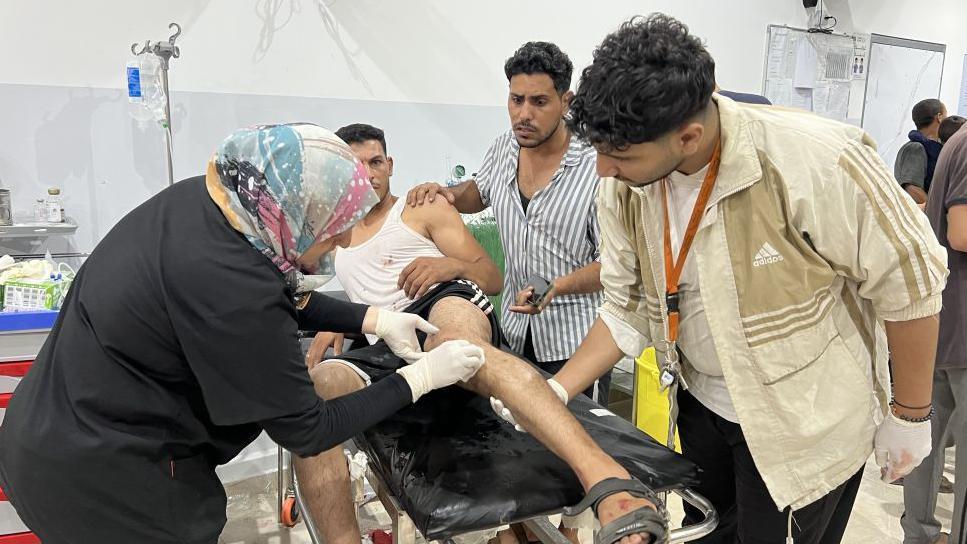On a recent Sunday, a tragic incident occurred in central Gaza when an Israeli artillery strike hit an al-Mufti school that was serving as a shelter for displaced Palestinians, resulting in the deaths of at least 15 individuals, including entire families. This attack took place in the Nuseirat camp, as reported by Gaza’s Hamas-run Civil Defence Agency, which indicated that numerous others sustained injuries, further exacerbating the humanitarian crisis in a region already in turmoil. The Israel Defence Forces (IDF) have stated that they are investigating these reports. Earlier that day, another attack, reportedly a drone strike, killed five children who were innocently playing at a street corner in northern Gaza, showcasing the indiscriminate nature of violence that has engulfed the area.
Civil defence officials assessing the aftermath of the strike at al-Mufti school reported that at least 50 individuals were injured. This attack was part of a broader and intensified military engagement by Israeli forces in the northern Gaza strip, particularly in areas like Beit Hanoun, Jabalia, and Beit Lahiya. These locations have reportedly experienced severe ground operations from Israeli troops, leading to significant casualties among the Gazan population. The conflict’s toll has been devastating, with Gazan authorities announcing that hundreds have died in recent days as military actions have escalated.
The dire situation in Gaza has left hospitals struggling with a critical shortage of medical supplies, even as international organizations attempt to provide necessary assistance. A recent joint operation led by the World Health Organization and the Red Cross has successfully managed to resupply two hospitals after days of concerted efforts. This logistical challenge highlights the extent of the humanitarian crisis exacerbated by ongoing violence. The United Nations has noted that approximately 1.9 million of Gaza’s 2.4 million residents have been displaced as a direct result of the conflict, many relocating multiple times in pursuit of relative safety, only to find themselves in peril again.
Amidst these horrifying events, graphic imagery has emerged from the scene of the drone strike in northern Gaza, revealing the bodies of five young boys who were killed while playing. Disturbing details emerged that one of the boys had been found clutching marbles, an innocent reminder of childhood overshadowed by tragedy. The heart-wrenching account of their deaths evokes the profound loss felt by families in the region. One aunt shared an emotional tribute on social media, illuminating their plight as they had moved to al-Shati camp, fleeing violence in Jabalia under the impression they had reached a safer haven.
The ongoing escalation of violence in the region can be traced back to the original conflict’s outbreak on October 7, when Hamas launched an unprecedented attack on northern Israel, resulting in the deaths of approximately 1,200 individuals and the hostage-taking of over 200. This event marked a significant turning point in the conflict, setting off a series of retaliatory strikes and military maneuvers that have led to the current, worsening situation. The ongoing cycle of violence has deepened existing resentments, and intensified fears about safety.
With the population of Gaza facing unprecedented challenges and tragedies, the international community has found itself increasingly concerned about the humanitarian implications and the need for urgent, sustained interventions. The situation remains fluid, and while investigations regarding specific strikes continue, the overall loss of life and destruction characterize the ongoing humanitarian disaster. The horrific toll of the conflict, affecting vast numbers of civilians, raises crucial questions about the future of peace in the region and the urgent need for effective interventions to address the severe humanitarian crisis at hand.

